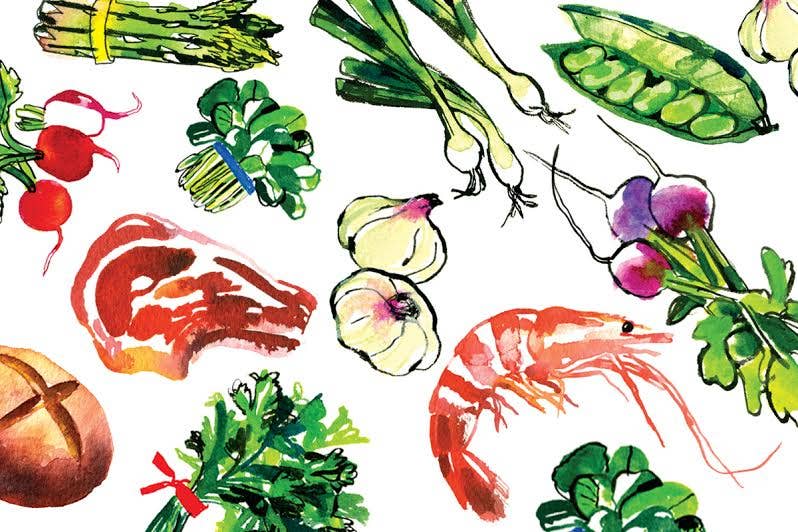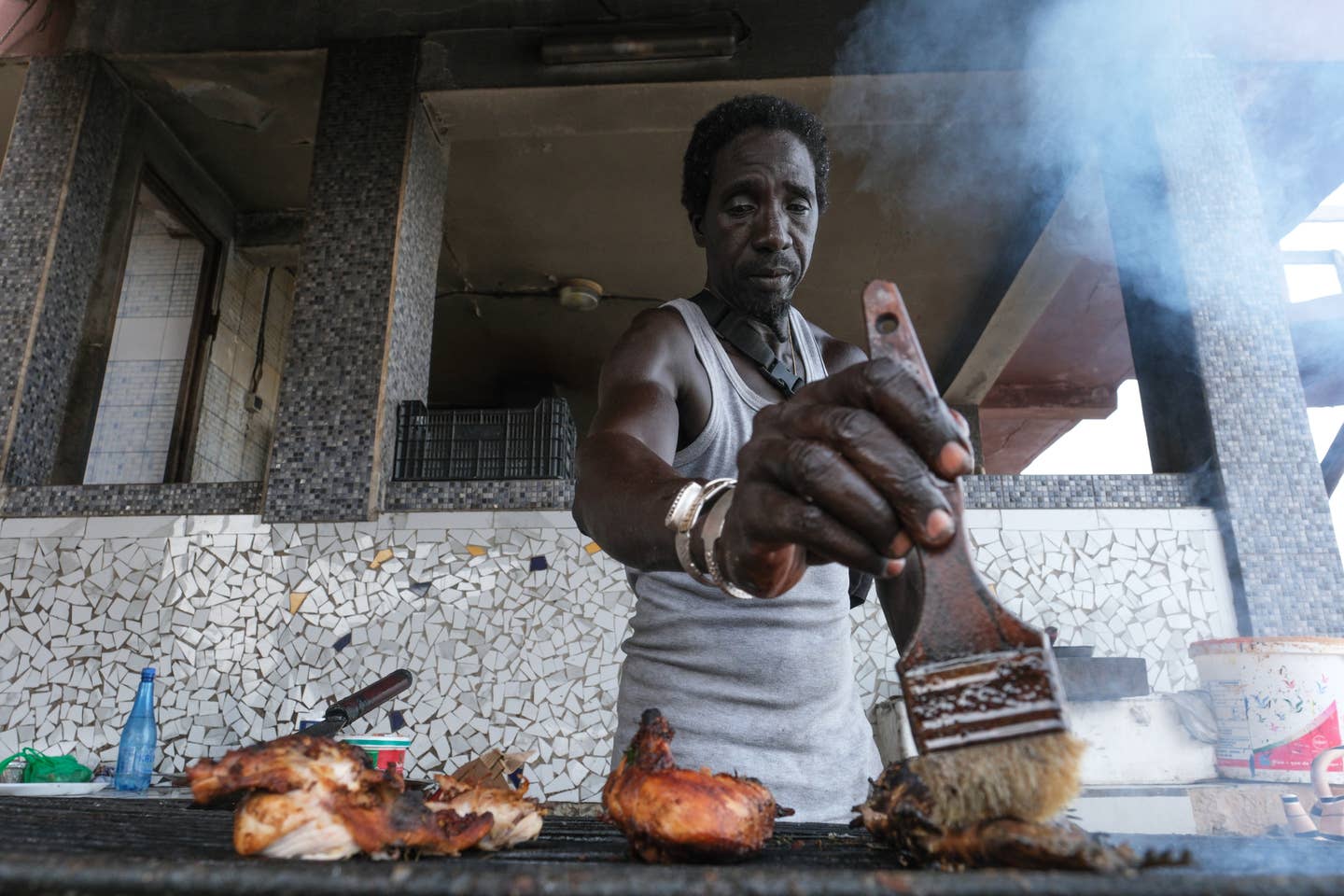
The Auvergne is famous for its excellent cheeses, and duly so. The area lays claim to five native kinds, described here, that have earned the Appellation d'Origine Controlee designation; that's more A.O.C. cheeses than any other of France's 26 administrative regions.
Bleu d'auvergne A crucial step in the making of this pungent cheese, produced across much of the Auvergne, is the addition of a live bacterial starter, Penicillium roqueforti, to the cows' milk before it is made to curdle. This gives bleu d'auvergne a more intense sharpness. Also, the curd, once formed, is cut into sections before it is left to drain; this, in addition to the piercing of the curd with long needles, further promotes aeration and the development of the cheese's blue veins. Bleu d'auvergne, which is creamier and less salty than many other blue-veined cheeses, is aged in damp cellars for a minimum of four weeks, which allows it to acquire the suppleness of texture and depth of flavor it's known for.
Fourme d'ambert This creamy, subtly flavored blue-veined cheese, pressed into tall cylinders, is produced on farmsteads in the Auvergne departements of Cantal and Puy-de-Dome. It is made from cows' milk, which is curdled and allowed to rest for 24 hours before the curd is salted and then pierced with long needles to aerate it, thereby promoting the growth of the cheese's distinctive blue mold. Fourme d'ambert is aged for up to several months in cool, damp cellars, where the flavors mature, the mold develops, and a light, ash-colored rind forms. This immensely appealing cheese, popular in households across France and sold worldwide, combines a tangy, aromatic perfume with a rustic and slightly sweet flavor.
**Cantal **The namesake cheese of the Cantal region is one of France's oldest cheeses; the Roman historian Pliny the Elder made reference to it in his writings 2,000 years ago. Almost identical in appearance to salers but with a slightly coarser texture, cantal depends heavily for its character on the process of affinage, or cellar aging, during which the cheese is carefully turned and wiped down with damp cloths, to encourage the growth of the rind. With a cheese like cantal, the skill of the affineur is considered to be as crucial to the taste of the cheese as is the talent of the cheese maker. The length of time a wheel of cantal is aged will dramatically affect the cheese's flavor. Cantal that's been aged for one to two months has a milkier flavor and a light-colored rind. Cantal that's been aged for two to six months is often classified as entre-deux, "between two", and begins to show stronger, more floral flavors, as its rind develops a dimpled surface. Vieux (aged, or sharp) cantal—the kind favored by aficionados of the cheese—is spicy, pungent, and even gamy.
Salers It takes 400 liters of that fresh milk to make a single, 40-kilogram wheel of this firm, sharp, intensely flavored cheese, which is aged for a minimum of three months. A close cousin of cantal (see above), salers is named after a town in the Auvergne's southwest, where the cheese is made. Production takes place between April 15 and November 15—timing that ensures that the cheese will be made only from the milk of cows that have been feeding on pasture. It is to that region's wildflower-dotted upland pastures that salers owes much of its herbaceous, aromatic flavor; the region's volcanic soil is hospitable to wild carrot, gentian, wild mountain fennel, and dozens of other kinds of prairie flora whose essence finds expression in the fresh milk with which salers is made.
Saint-nectaire Produced mostly in the Puy-de-Dome, in the central Auvergne, saint-nectaire was the first French "farm style" cheese to be awarded the A.O.C. designation, in 1955. Farmstead saint-nectaire, a semisoft, nutty-tasting, washed-rind cheese, is made from whole cows' milk. In the Auvergne, a distinction is often made between true farmstead saint-nectaire and "saint-nectaire laitier", which is made not on dairy farms but at creameries, where the milk is often pasteurized. The latter, which often has an orange rind and a less complex flavor, is the kind found for sale the most often in the United States. With its mild, hazelnut taste and its soft yet resilient consistency, saint-nectaire is one of France's best-loved cheeses.
Keep Reading
Continue to Next Story










